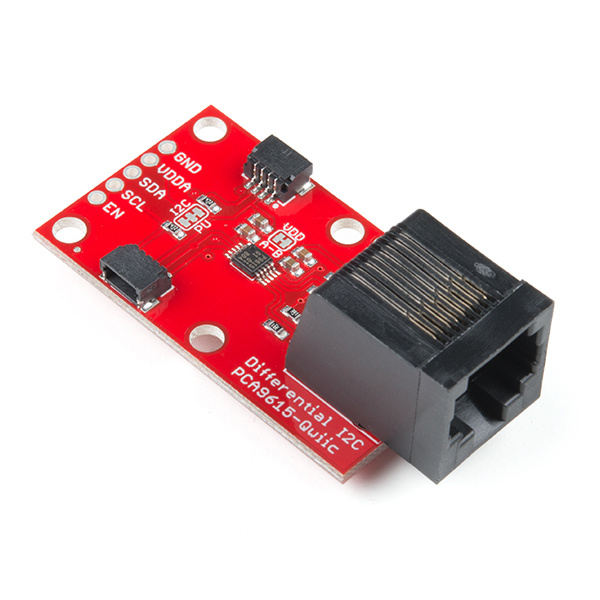Qwiic Differential I2C Bus Extender (PCA9615) Hookup Guide
Introduction
The Qwiic Differential I2C Breakout is the fastest and easiest way to extend the range of your I2C communication bus. The breakout uses NXP's PCA9615 IC, which converts the two default I2C signals into four differential signals: two for SCL and two for SDA. Coupled with the ease of SparkFun's Qwiic connection system, the differential I2C breakout board makes it easier to connect it to the rest of your system. The differential signals are sent over an Ethernet cable, which attaches to the breakouts through the on-board RJ-45 connectors. The differential signaling allows the I2C signals to reach distances of up to 100ft. while still maintaining their signal integrity!
Whether you need to extend the range of an I2C sensor on an autonomous vehicle plagued with noise from motors or want to create a vast sensor network in your home or office, the Qwiic differential I2C breakout is a great solution to extend distance and reduce noise susceptibility.
Required Materials
To follow along with this project tutorial, you will need the following materials. You may not need everything though depending on what you have. Add it to your cart, read through the guide, and adjust the cart as necessary.
- 2x Qwiic Differential I2C breakouts.
- A straight-through Ethernet cable (up to 100ft in length).
- A microcontroller or single board computer capable of I2C.
- An I2C sensor to communicate with on the other end of the I2C bus.
- If using the Qwiic connectors, two Qwiic cables.
Tools
You may need a soldering iron, solder, general soldering accessories, and a hobby knife depending on your setup.
Weller WLC100 Soldering Station
TOL-14228Suggested Reading
If you aren't familiar with the Qwiic system, we recommend reading here for an overview.
 |
| Qwiic Connect System |
We would also recommend taking a look at the following tutorials if you aren't familiar with them.



